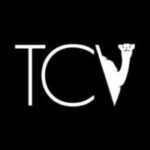The Strategic Plan: Everyone at Connecticut College has heard this term. It is the accumulation of new ideas for the College for the coming decade. In the highly esteemed practice of shared governance, over the past year, numerous individuals have come together to vocalize their thoughts and put them into action. On Sept. 29th, in an email to the campus community, President Bergeron invited community members to “review that work in the most recent and near final draft of the plan.”
President Bergeron opened the SGA Open Forum by explaining the planning process of the “ambitious” 15-page document. During the 2014-2015 academic school year, Connecticut College launched the development of a new GE, Connections, that is supposed to put the liberal arts into action. In doing so, it became apparent that the direction of the school had not been widely reconsidered since 1998, when the last strategic plan was published. Once Connections was finalized, the senior administration took on the new project of redefining the school for a changing market.
In order to fully engage all perspectives, a Strategic Planning Committee was appointed. These individuals represent staff, faculty, students and members of senior administration. Dean of the Faculty Abby Van Slyck and Associate Professor of Botany Chad Jones are co-chairing the committee. In the President’s words, the first goal of the committee “far and wide” was to take a census of what the community would like to change about our campus. This was done through meetings, email surveys, sticky-note boards around campus and general conversation. John Nugent, Director of Institutional Research and Planning, explained, “A lot of similar ideas kept reappearing. Those ideas are now what you see in the actual document.”
The three strategic priorities are ‘Enhancing Academic Distinction,’ ‘Enriching the Student Experience,’ and ‘Supporting a Diverse, Just, and Sustainable Community.’ Each of these three priorities has three individual goals with objectives and specific actions to encourage this change.
‘Enhancing Academic Distinction’ focuses on education, research and the arts. It makes sense that education and research are the two goals; they are straightforward for a college. The arts, however, took a little more explanation. President Bergeron, while presenting the goals, exclaimed, “Music is the center of the liberal arts. It incorporates social change through the spirit of collaboration.” Connecticut College used to be more focused on the arts, but in recent years, the school has drifted. By centering this goal in the Strategic Plan, the arts can again be used to create more interdisciplinary spaces for educational learning.
‘Enriching the Student Experience’ hones in on Life and Career, Campus Living and Athletics. This set of priorities focuses on life outside the classroom. While the intention of college is to train students in their field of study, it is also about students becoming real members of society. This entails their career goals, extracurricular interests and the athletic communities they may join. All of these components in their fullness or lacking, determine the quality of a student’s experience. After listening to the community’s opinions, the Committee decided to develop improvements in this field of the college.
‘Supporting a Diverse, Just and Sustainable Community’ explores the necessity of full participation, sustainability and fiscal growth. As in all communities, a broad range of experiences makes it richer. In order for these voices to be heard, individuals need to feel consistently welcome. While there are currently efforts to advance all three of these goals, it is important to keep them in mind as the school progresses.
Realizing that a majority of the necessary improvements rely on monetary stability, the fiscal component of this goal is the most recent addition to the plan. Because of the college’s relatively small endowment, the institution relies on tuition. This is becoming an issue because “the cost of providing a high-quality residential liberal arts education has risen annually even while families’ abilities to pay, along with the numbers of high school graduates able to attend college, are falling” (Building on Strengths: Draft p. 5). Rich Madonna, VP of Finance and Administration, has been actively working with different ways to bring in more money for the school’s benefit.
In the past couple of months, the document has become much more feasible. Without jeopardizing any of its ambitious nature, stepping stones have been laid out to make big projects conquerable. A timeline for each action will be available online in the coming weeks, with the responsible party listed.
The project has improved the school’s image as well. Bergeron explained, “Pathways as a concept make sense for this day and age” because a majority of innovation happens at the intersections of different fields now. There was a 5% increase in applications last year, as well as a 1% increased selectivity in the applicant pool. The admissions office predicts this trend will continue.
All the work, recently past and still continuing has enhanced community vision. “It is important for a community to step back and think about who they are and who they want to be.” This is the first step in making the changes the community wishes to see. In her closing statements, Bergeron reminded the audience, “This is a long range document… It will take closer to ten years to understand the ambition in this document, which means it will evolve.”









